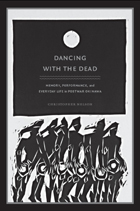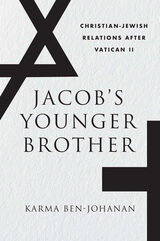2 books about Postwar Okinawa

The Community of Nuchi Du Takara ("Life Is the Ultimate Treasure") in Postwar Okinawa
Local Subjectivity within and against Empire
Masamichi (Marro) Inoue
University of Michigan Press, 2025
Against the background of the prolonged presence of the US military in post–World War II Okinawa, The Community of Nuchi Du Takara (“Life Is the Ultimate Treasure”) in Postwar Okinawa explores the conflict between Okinawa and the US-Japan alliance. Inoue examines how Okinawan activists, artists, writers, and others have resisted US military presence, particularly the planned construction of a new military facility in northern Okinawa. In so doing, however, Inoue also underscores something in postwar Okinawa that one fails to grasp if one approaches it solely through the lens of resistance or protest. In historically and ethnographically grappling with this “something,” he develops a local notion of nuchi du takara (“life is the ultimate treasure”) into an analytical concept. Inoue shows how nuchi du takara has functioned as a cultural cushion inserted between the constituent power of Okinawan social actors from below and the constituted power of the US-Japan alliance from above; it has helped Okinawan social actors externally engage in complex negotiations—compromises and concessions as well as resistances and protests—vis-à-vis Washington and Tokyo, a process involving the development of the internal capacity of their community to embrace diverse and often contradictory attitudes toward the US military for small yet significant and incremental social changes if not revolution. Inoue’s grounded investigation points toward the possibility of a World Republic—an international politics built upon universal peace, global democracy, and shared affluence—against the current sovereignty of global capitalism.
[more]

Dancing with the Dead
Memory, Performance, and Everyday Life in Postwar Okinawa
Christopher T. Nelson
Duke University Press, 2008
Challenging conventional understandings of time and memory, Christopher T. Nelson examines how contemporary Okinawans have contested, appropriated, and transformed the burdens and possibilities of the past. Nelson explores the work of a circle of Okinawan storytellers, ethnographers, musicians, and dancers deeply engaged with the legacies of a brutal Japanese colonial era, the almost unimaginable devastation of the Pacific War, and a long American military occupation that still casts its shadow over the islands. The ethnographic research that Nelson conducted in Okinawa in the late 1990s—and his broader effort to understand Okinawans’ critical and creative struggles—was inspired by his first visit to the islands in 1985 as a lieutenant in the U.S. Marine Corps.
Nelson analyzes the practices of specific performers, showing how memories are recalled, bodies remade, and actions rethought as Okinawans work through fragments of the past in order to reconstruct the fabric of everyday life. Artists such as the popular Okinawan actor and storyteller Fujiki Hayato weave together genres including Japanese stand-up comedy, Okinawan celebratory rituals, and ethnographic studies of war memory, encouraging their audiences to imagine other ways to live in the modern world. Nelson looks at the efforts of performers and activists to wrest the Okinawan past from romantic representations of idyllic rural life in the Japanese media and reactionary appropriations of traditional values by conservative politicians. In his consideration of eisā, the traditional dance for the dead, Nelson finds a practice that reaches beyond the expected boundaries of mourning and commemoration, as the living and the dead come together to create a moment in which a new world might be built from the ruins of the old.
Nelson analyzes the practices of specific performers, showing how memories are recalled, bodies remade, and actions rethought as Okinawans work through fragments of the past in order to reconstruct the fabric of everyday life. Artists such as the popular Okinawan actor and storyteller Fujiki Hayato weave together genres including Japanese stand-up comedy, Okinawan celebratory rituals, and ethnographic studies of war memory, encouraging their audiences to imagine other ways to live in the modern world. Nelson looks at the efforts of performers and activists to wrest the Okinawan past from romantic representations of idyllic rural life in the Japanese media and reactionary appropriations of traditional values by conservative politicians. In his consideration of eisā, the traditional dance for the dead, Nelson finds a practice that reaches beyond the expected boundaries of mourning and commemoration, as the living and the dead come together to create a moment in which a new world might be built from the ruins of the old.
[more]
READERS
Browse our collection.
PUBLISHERS
See BiblioVault's publisher services.
STUDENT SERVICES
Files for college accessibility offices.
UChicago Accessibility Resources
home | accessibility | search | about | contact us
BiblioVault ® 2001 - 2024
The University of Chicago Press









